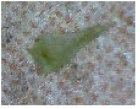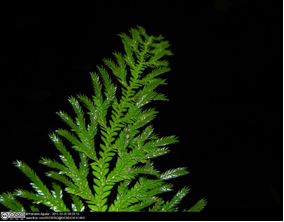Introduction
Lycopodiophyta have an important position in the history of plant life. The group was once a very diverse clade, which is well-documented with fossil records, but now has only a small number of extant members. Their history is longer than any other group of vascular plants. Once fast-growing trees that could grow to 30 metres, whose remains are now in the form of coal, Lycopodiophyta are a sister clade to all other vascular plants including ferns and seed plants. They have been evolving independently of other vascular plants for over 400 million years and in that time have evolved several convergent features like leaves, wood, trees and seed-like structures, making them extremely important in the understanding of plant evolution.
The three extant families are Lycopodiaceae, Selaginellaceae and Isoetaceae. This blog focuses on Selaginellaceae, commonly known as ‘Spike Mosses’.
Classification
Although Lycopodiaceae, Isoetaceae and Selaginellaceae are well understood to be a monophyletic group, the relationships at subfamily and species level are less well understood. There are around 1100-1200 extant species of Lycopodiophyta, which are grouped into three orders – Lycopodiales, Selaginellales and Isoetales. Many other orders would have once existed but these are all that remain. There are a few different ways in which these orders have been grouped into classes – sometimes they are all seen as one class; sometimes Isoetales and Selaginales are grouped together into one class and Lycopodiales into another; and sometimes they are seen as three separate classes. The two class approach is generally accepted with Lycopodiales in Lycopodiopsida; Selaginellales and Isoetales in Isoetopsida; and their closest, extinct, relatives in Zosterophyllopsida.
Lycopodiophyta
— Lycopodiopsida — Lycopodiales — Lycopodiaceae
— Isoetopsida — Selaginales — Selaginellaceae
— Isoetales — Isoetaceae
This diagram illustrates the arrangement of families within orders and orders within classes, within the Lycopodiophyta.
Lycopodiaceae are homosporous meaning they only produce one type of spore, which sets them apart from Selaginellaceae and Isoetaceae, which are heterosporous. Furthermore Isoetaceae bear their different spore type on different plants, embedded in the adaxial face of the leaf-base, whereas Selaginellaceae bear both spore types on the same plant.
The plant list currently lists 326 species names within Selaginellaceae of which 308 are in the genus Selaginella; 15 are in Bryodesma; and each of the genera Didiclis, Diplostachyum and Heterophyllium are monospecific (each containing just one species). Previously the family has been rearranged with several other generic division options. One example recognised three generic divisions including Selaginella – with sporophylls and leaves spirally arranged , Bryodesma – with sporophylls decussate, leaves spirally arranged, and Lycopodioides – with sporophylls and leaves decussate. The latter included the North American species S. apoda and S. eclipes and Bryodesma included S. rupestris.
The group was first divided by Palisot de Beauvois in 1803-1805. He chose to make Selaginella a monotypic genus (with just one species), along with Didiclis, and he put the majority of the species into Stachygynandrum. Diplostachyum was assigned species similar to Selaginella apoda.
More recent phylogenetic studies recognised a more archaic sister group to most Selaginella species, termed Euselaginella, which contained the type species Selaginella selaginoides and Selaginella deflexa. The rest of the species were split into two main groups: One with the Bryodesma species known as the Articulatae, and the other including much of the previous Stachygynandrum group.
Notable species include S. moellendorf, which has one of the smallest genome sizes and has been sequenced, helping to provide the plant science community with important genetic information about the evolution of plants; also S. lepidophylla commonly called the resurrection plant is able to form a dry brown ball during dry conditions (poikilohydry) and regain its green colour in moister conditions.
Life cycle and identification notes:
Lycopodiophyta are collectively known as club mosses and, as so many of them look remarkably similar to large true mosses, Linnaeus chose to put them together in the same class. However they have very different structures and life-cycles and are in fact quite unrelated.
The sporophytes of species of Selaginella are commonly known as spike mosses, they produce two different kinds of spores and gametophytes (heterospory). This is an advanced feature, which differentiates the family from Lycopodiaceae, but is also present in seed plants.
The plants produce sporangia on stalks in the axils of specialised leaves called sporophylls. Sporophylls are borne in terminal cone-like clusters called strobili. These sporophylls can be microsporophylls or megasporophylls. Microsporophylls bear microsporangia, which contain many microsporocytes that undergo meiosis and produce microspores. The megasporangia usually contain a megasporocyte, which undergoes meiosis and becomes four large megaspores. Microspores can become male gametophytes while megaspores become female gametophytes. These female gametophytes mature and produce several archegonia. Water is then required to unite the male and female gametophytes.
The main difference Lycopodiophyta have from all other vascular plants is their microphylls – leaves that have just one vein, as opposed to the megaphylls of ferns and seed plants. The common ancestors of Lycopodiophyta and seed plants and ferns are unlikely to have had leaves and so it is thought that both lineages evolved leaves independently.
Identification of the family:
Leaves (Microphylls) and stems:
Have a single vein
Have tiny ligules, which are colourless scale-like appendages attached to the adaxial surface (nearest the leaf axil) at the base of each microphyll, and often fall off. These can be seen with a microscope. Their function is unknown.
Selaginella’s pattern of shoot branching is a very distinguishing feature. The apical meristem (growing tip) will often divide into two branches forming Y shapes. One of these will be indeterminate and will out-grow the other. This alternates along the stem and results in a zigzagging stem shape. The roots also show a similar ‘Y’ shaped branching pattern although the branches are very sparse.
Species of Selaginella can be either anisophyllous or isophyllous depending on leaf arrangement and shoot symmetry. S. moellendorfii is anisophyllous – it has two ranks of smaller dorsal microphylls (lower surface is prominent) and two ranks of larger ventral microphylls (upper leaf surface is dominant). In isophyllous species only one of these leaf types exists. S. selaginoides is one such species. It’s spirally arranged leaves have a superficially similar appearance to Lycopodium species.
Dorsal microphylls tend to terminate in spine-like appendages. The sporophylls on the strobilus are four-ranked and give it a square shaped cross-section.







Pingback: Diplostachyum (Selaginellaceae) – life of plants
Pingback: Lycopodiodes (Lycopodiaceae) – life of plants